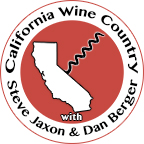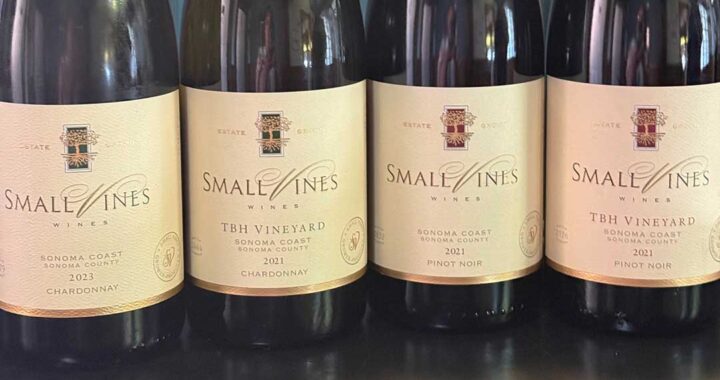Podcast: Play in new window | Download (Duration: 44:54 — 20.6MB) | Embed
Subscribe: Apple Podcasts | RSS | More
Paul Sloan from Small Vines Wines joins Steve Jaxon and Dan Berger on California Wine Country. Daedalus Howell also joins us today. Small Vines Wines makes “world class wines of distinction.” Paul grew up in Sonoma County on a 250-acre horse and cattle ranch, on the eastern side of Santa Rosa. He worked in restaurants and ended up at John Ash & Co., known as one of the original farm-to-table restaurants.
His favorite wines were always from families that grew the fruit and also made the wine. When he fell in love with age-worthy, food-friendly wines, he continued to work for the Dutton family and studied viticulture at Santa Rosa JC. He planted some high-density vineyards over the years and his wines come from them.
High-Density Vines
Dan Berger says that the predictions of weather are less reliable than ever, as climate change is not uniform. Paul finds that high-density planting helps, in hot years by shading the vines. High density planting works but you have to take careful care of the vines.
Paul was the first person to actually design a wine with good natural acidity by planting high density vines.

California Wine Country is brought to you by Rodney Strong Vineyards and Davis Bynum Wines.
Phylloxera is a root louse that is so small it is hard to see. It chews on certain roots and in particular, native roots. So you have to choose rootstock that is impervious to it. It appeared in the late 1980s. It was inevitable that all the vines affected had to be torn out and the vineyards replanted.
The more leaf surface you have, the more dappled sunlight you have, instead of direct light. By planting a 4-foot tractor row instead of an 8-foot tractor row, you can get fifty percent less direct sunlight on the fruit.
Daedalus asks about automation and the potential to use drones in the vineyard. Paul tells about advanced tractors that gather data. The high end producers will continue to do things by hand, but a lot of less expensive wines will have to use some automation. Dan Berger mentions that a lot of the automation is in the winery, rather than in the vineyard. There are tanks with built-in chemical analysis equipment. Also, sorting the fruit is still an important manual process. Ideally, you only harvest the ideally formed clusters of fruit.
Their first tasting is a 2021 TBH Chardonnay, that demonstrates the fruit selection. They sort the fruit on the vine. You only take the ideal length of cluster and diameter of berries. Their 2021 Chardonnay is the current release. His goal is to make age-worthy, food-friendly wines, so he sees no reason not to hold his wines for a few years before releasing them.


